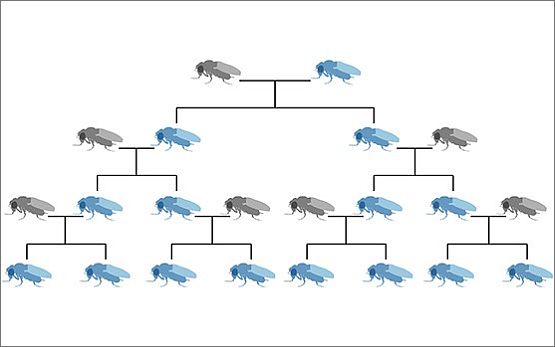
The release of genetically modified insects with gene drives is a novel technology that is discussed as a potential tool for area-wide and sustainable control of pests, disease transmitting vectors, and invasive species. We investigate the possible environmental impact of the technology.
Gene drives are selfish genetic elements which are transmitted to the progeny at a rate of more than 50% during sexual reproduction. Such gene drive elements do occur in nature. The advent of molecular biology has allowed these types of genetic systems to be engineered into an organism in a targeted way. The system can be used to drive a particular trait into a population within few generations. This also occurs when the trait has negative consequences for the carrying organisms. The technology can thus be used to reduce the size of insect populations or to alter populations in a defined direction. In an agricultural context, synthetic gene drives could for example be used to control invasive pests such as the spotted-wing Drosophila or to alter aphid populations in a way that they cannot transmit plant diseases.
Agroscope investigates the environmental impact
Concerns have been raised that the use of insects with synthetic gene drives could cause adverse effects on the environment. These concerns relate to the fact that this technology is based on the release of genetically modified organisms that can reproduce and establish. Furthermore, the impact on the target pest population can be very large and theoretically even lead to the elimination of a species. Thus, the environmental impact of the technology has to be assessed before insects with gene drives are released. The focus of our investigations is on the impact for biodiversity and in particular, the question whether gene drives could be transferred to other, non-target species.
Insects with synthetic gene drives fall under the gene technology regulation. The environmental risk assessment can build on the experience made with other established technologies that require the release of living organisms. This includes in particular classical biological control where natural enemies of exotic pests are introduced from the area of origin and released with the aim to establish and to provide a long-term control of the pest population.
Contacts
Publication





